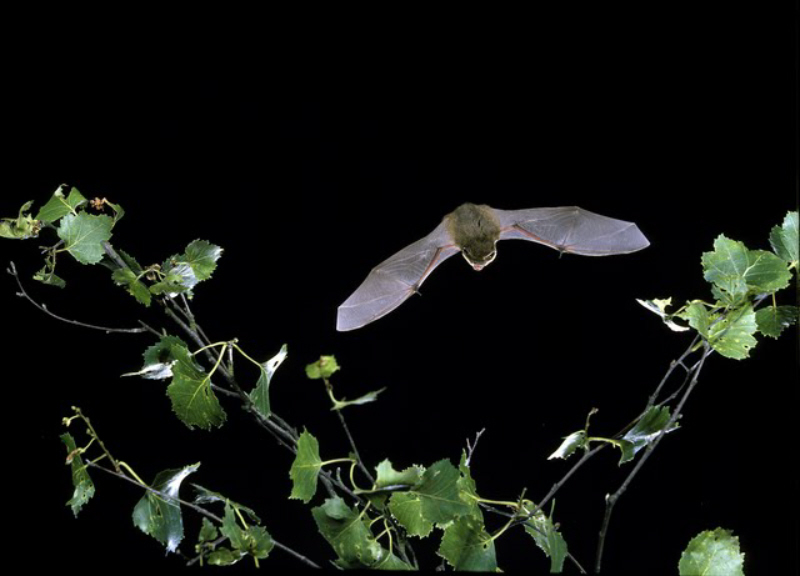
25 Nov Sensing Nature – Following Bats
Bats and Bat People
At the beginning of November, I chaired the second of two days of presentations for Waveney & Blyth Arts‘ new project: Sensing Nature. The project, which runs from this autumn for a year, explores how humans and creatures hear, make and experience sound, leading to a specially created outdoor performance trail in 2017 that will not depend on sight.
In October the presentations focused on hearing – how do humans make speech and what sounds are made by wildlife and by the environment. As part of the project, Waveney & Blyth Arts organised an echo-location workshop for humans to teach the basic principles of echo-location, based on tongue clicks, helping visually impaired people navigate.
The November talks focused down on one group whose world is mapped in sound –the bat. Although they can see, bats navigate in the dark using echo-location. Learning how nature experiences the environment and what we can learn from them is behind our Sensing Nature project.
Here are some brief notes from the two excellent presentations with thanks to both Lisa and Lore for giving up their time to join us in Halesworth.
Lisa Worledge, Head of Conservation Services, Bat Conservation Trust
Lisa gave an introduction to bat echo-location. Bats are unique – being the only mammals that can fly. There are 1200 species of bat worldwide of which 18 are native to Britain. 17 species breed in Britain and the eighteenth is represented by one solitary male in Sussex.
Bats are an ancient group of animals and their fossils appear in Cretaceous rocks; even at this time they showed signs of rudimentary echo-location. Bat calls are beyond our hearing but technology means that smaller and smaller equipment can now be used to bring the sounds within our hearing range.
What is echo-location and how does it differ from other calls and sounds? Echo-location can be thought of as a sound picture of the immediate environment. Other species that use this are whales and dolphins, some birds such as oilbirds and shrews. In the 1930s the first ultrasonic detectors identified this activity. If we consider the song of the robin, it always sounds like a robin. But bats use sound to find out where they are in the environment so the calls will be different in different places. In woodland a bat, such as a noctule, will need much more information than in open space so the calls are faster. Up above the trees, noctules can fly as high as swifts, and the sounds are slower, more like water dripping.
Fruit bats don’t echo-locate but make clicks with their tongues – chattering and squabbling – or clicks with their wings. Air is passed over the vocal chords and the sound is emitted either through the nostrils or mouth. If the former, the bats have very pronounced nasal features, known as nose leaves (like a satellite dish), to send out sounds.
The long-eared bat has exceptionally good hearing and its clicks are so quiet that it is called the whispering bat.
Bat calls are measured in milliseconds – echo-location calls are between 1-5ms, but horseshoe bat calls are up to 50ms. Sound waves always travel at the same speed through the air but the tonal quality is very different depending on how long the pulses are. We need at least a 4 second pulse to hear it.
We can look at bat calls through sonograms, a picture of sound. Lisa showed sonograms for different bats – for example, natterers have a long sweep down in frequency; pipistrelles have a characteristic hockey stick shaped call. A bat can distinguish objects 12mm apart using echo-location and natterers are able to separate objects only 5mm apart. Using echo-location bats can tell size, shape and texture of objects. They can tell the difference between prey and leaves eg they can distinguish a beetle walking on a leaf.
Dr Lore Thaler, Expert in human echo-location, Durham University
Lore described how echo-location in people is similar to bats in terms of detecting the environment. But people work in the sonic range whereas bats are in the ultra-sonic range. Most people who use echo-location are blind and they use it as a sensory substitution for vision. Echo-location gives them additional information that can be useful if vision is not available.
People can be trained in echo-location but have to have normal hearing. In humans, the echo-location is produced by using mouth clicks, although hissing or whistling can be used. A mouth click is fixed in relation to the ears so it produces a good spatial relationship.
The human span for clicks is between 50 ms and 4ms in length and 2 ms is the briefest click a person can make. This method can be used to work out how far something is away from you; whether it is to the right or left.
Lore played a number of sound clips of people echo-locating including the American Daniel Kish.
Mouth clicks can change in loudness and pitch eg you can vary them if you smile or purse the lips and individuals have very different clicks. The audience were invited to listen to some sound tapes of people clicking and Lore explained that our brain tries to suppress the echo coming back from the sounds so we think we don’t hear it. The brain can be trained to listen for the echo. Blind or visually impaired people have better echo-location skills than sighted and the brain redevelops in VIP to process sound.
Lore had led an echo-location workshop on the preceding day to introduce the practical techniques for using this ‘tool’ to help navigate and avoid obstacles but she stressed it is not a ‘fix-all’ tool as the media suggest.
Look out for more information on the Sensing Nature project in 2017.
Photo Credit – Pippistrelle Bat by © Hugh Clark, Bat Conservation Trust


